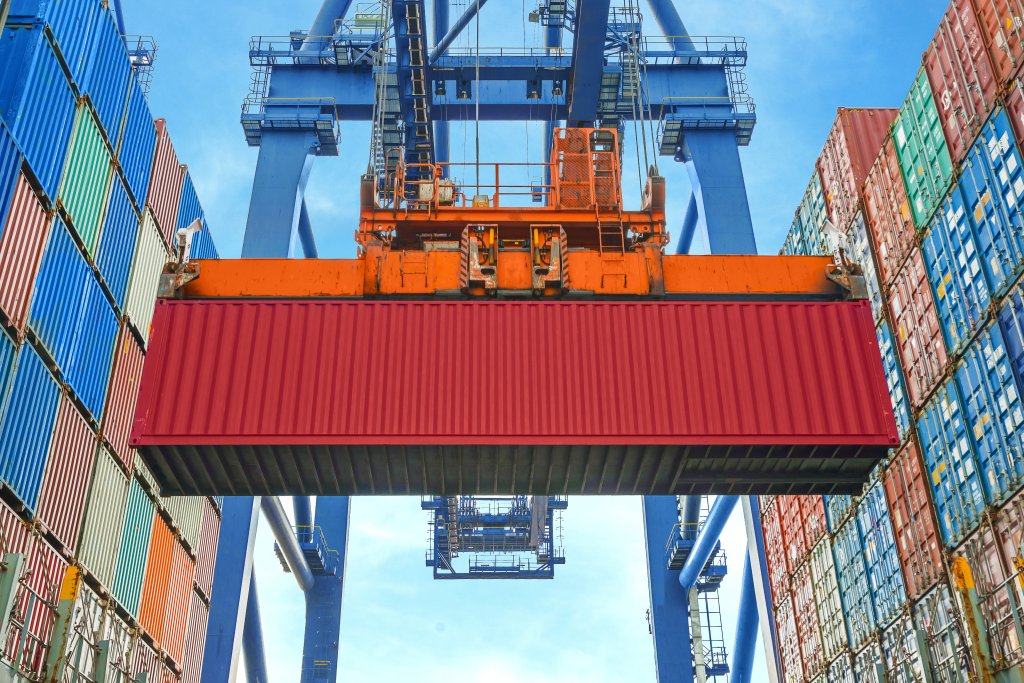Trucking and freight transportation are critical components of the global supply chain. More than trains, boats, and aircraft cargo management, ground-based freighting is the crux of shipping. In recent years, the trucking industry experienced more frequent stagnation in response to domestic and global events.
The world is continually changing, but a successful business implements strategies to combat stagnation and decline. Many effective truck strategies like freight matching differentiate a successful and failing company. What tools and means do profiting trucking businesses use to keep moving? Read on to see five effective strategies for any freight company.

Prepare for Container Shortages
Container shortages are an ever-present issue in the industry. A business’s ability to move freight depends on job availability, workers, and shipping boxes, and most trucking companies do not have their own. As a result, many have to rent or purchase containers as they become available.
Covid-19 drastically slowed the rate of shipping container production. While few were made, many more were halted in their use, still full and unavailable. As the trucking industry gradually recovers from the lockdown period, the best thing a business can do is create a preparation plan. Then, they will be ready when future container shortages occur.
How does a business make a container shortage preparation plan? First, seek domestic producers that continually make shipping boxes. Purchase some for emergencies and distribute them to your business’s suppliers. Steadily rely more on local producers over overseas ones, which are less reliable during global crises.
Finally, make a habit of reserving shipping containers in advance. Availability is not guaranteed, but by using freight forwarding, a business can ensure that its company will have the means to continue to operate in unforeseen circumstances.
Communicate About Container Capacity and Location
Continually communicate with container producers and update your PO managers. A clean record of where ordered freight boxes are and how much they can hold will help business owners make effective plans.
Meetings, scheduled phone calls, and regular verification give freight companies a clearer picture of where their orders are. They also help suppliers create and complete them on time.
Tools like container tracking devices (CTDs) let anyone observe the real-time progress of their trucking shipments. Look for container producers that include an automatic identification system (AIS) for heightened communication. Implementing regular verification and technological assistance can eliminate questions to streamline the shipping process.

Implement Helpful Technologies
Freight business owners know the struggle of delays due to processing and arrangement time for paperwork, orders, and communication. For tasks like those, turn to helpful technologies to streamline and speed up the supply chain. The less time spent securing cargo and containers, the faster your business can meet demand and prepare for the next wave.
Freight matching is one of the most critical and helpful tools a supply chain business owner can adopt. Some programs establish a virtual network for business owners to see and reserve shipping containers in real-time. These tools also streamline administrative work, sending automatic reports and orders on clients’ behalf.
Another helpful technology that saves shipping companies time and money is dynamic routing. Think of dynamic routing tools like a high-powered GPS that constantly updates and refines its paths. With the proper implementation, this tech can save on fuel costs, reduce driver fatigue, and still meet deadlines adequately. This tech is still in development, getting better each day.
Finally, consider technologies that log the hours, location, and temperature of every container. Information like this is essential to assess what isn’t working properly within a company and how to improve it. Sensors, GPS devices, and electronic logging tools are automatic, helping shipping businesses gather statistics to refine their operations.

Anticipate Competition in Freight Forwarding
Freight forwarders are essential for getting your cargo from the manufacturing site into the customer’s hands. Many forwarding businesses have several clients, and as a result, companies may sometimes compete for priority. However, there are a few ways for a shipping company to secure its forwarders.
The first technique is to establish rapport with freight forwarders. Networking is a simple but crucial marketing tactic. Properly done, it could reserve a company a spot in the forwarding chain over others. Rapport involves being patient during global labor shortages while firmly requesting real-time updates on ordered services.
Secondly, stay knowledgeable about legal restrictions, regulations, and industry news in freight forwarding. Laws in this field change often, and clientele that do not abide by these laws waste time and money and can even jeopardize a freight forwarder.
Finally, create a backup plan in case of no forwarding vacancies. Skipping the middleman in the shipping industry is expensive, but a small investment can cover the cost of direct transport in emergencies. Monitor forwarding availability in advance and prepare for shortages ahead of time to keep your business moving.

Retain Your Drivers and Encourage New Hires
Every business owner has eyes on the current labor shortage that arose from the lockdown and changing conditions. Retaining your drivers and employees is more critical than ever as industry participation declines. The next generation doesn’t show much interest in trucking, so retaining current employees is paramount.
One of the easiest and most obvious ways to retain your drivers is to offer incentives for hard work. Bonuses, better conditions, and seniority privileges encourage truckers to stay loyal and do their best.
Many drivers are upset by their workplaces not covering gas costs, medical bills, and other related expenses. If you cannot pay stipends, bonuses and wage increases will help workers offset those costs and ultimately be happier.
While there aren’t many prospects for new truckers in the current market, hiring strategies like sign-on bonuses can draw new employees to your company to fill your open truck driving jobs. Referral bonuses aid your current employees while inviting eligible workers to participate alongside them.
Remember that knowledge about conditions, pay, and expectations at your workplace are likely public. Therefore, it is critical to be transparent and treat veterans and new hires respectfully. A shipping company’s reputation is its best asset for longevity and efficiency. The drivers are the backbone of the freight business and cannot be overlooked.
The Key to a Successful Freight Company
Technologies like freight matching, capable management, and knowledge of trends and information amount to successful businesses. The key to keeping a freight company moving lies in economizing assets and minimizing downtime. Garnering rapport among workers and constituents is also critical.
Always plan for the unexpected and stay on top of legal, global, and internal changes. If you do, you will create a successful freight business with happy workers, eager suppliers, and continual profits.
